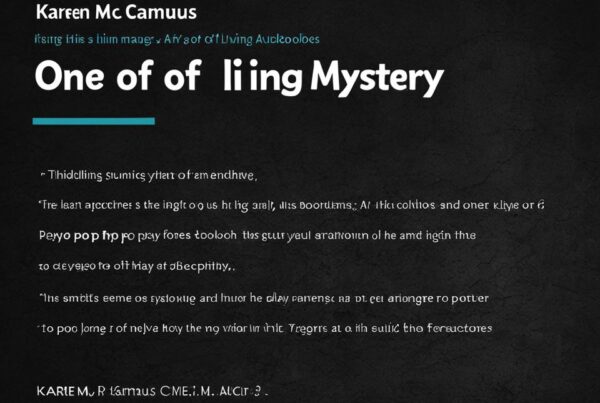Are you interested in the biological factors that influence human behavior? Do you want to understand the intricate relationship between our biology and actions? Then “Behave: The Biology of Humans at Our Best and Worst” audiobook is for you. This thought-provoking audiobook by Robert M. Sapolsky explores the complexities of human biology and the role it plays in our behavior.
Sapolsky is a renowned biologist, lecturer, and writer with extensive knowledge in the field of human biology. “Behave” draws from interdisciplinary perspectives, combining biology, psychology, and neuroscience, to provide a detailed analysis of why we behave the way we do.
In this audiobook, you will discover captivating insights into human biology and behavior. We will provide a comprehensive review, examining the key concepts explored in “Behave,” Sapolsky’s unique approach to understanding human behavior, the role of genetics and the environment, and the implications for society.
Stay tuned for our “Behave” audiobook review, and explore this thought-provoking book alongside us.
Overview of “Behave” by Robert M. Sapolsky
If you’re intrigued by the science behind human behavior, “Behave: The Biology of Humans at Our Best and Worst” by Robert M. Sapolsky is a must-read. Through a fascinating interdisciplinary approach, Sapolsky explores the intricacies of human biology, psychology, and neuroscience while examining why we act the way we do.
Sapolsky is a well-respected scientist, professor, and author known for his contribution to the field of human biology. His extensive knowledge and innovative approach to the subject make “Behave” an authoritative exploration of the topic.
The central themes of “Behave” revolve around the link between biology and behavior and how different factors such as nature, nurture, and societal influences contribute to human action.
The book has received widespread critical acclaim for its accessible writing style, blending scientific research with anecdotal stories to keep readers engaged. Whether you’re a student, scholar, or simply a curious reader, “Behave” is an insightful and thought-provoking read that will change the way you see yourself and the world around you.
Key Concepts Explored in “Behave”
Robert M. Sapolsky’s “Behave: The Biology of Humans at Our Best and Worst” provides a comprehensive exploration of the key concepts that govern human behavior. Through an interdisciplinary lens that combines biology, psychology, and neuroscience, Sapolsky reveals the intricacies of the human mind and how it influences our actions and decision-making processes.
One of the central themes of “Behave” is the role of human biology in shaping behavior. Sapolsky emphasizes that our actions are not determined by a single factor, but rather the complex interplay between genetics, environment, and experiences. He provides compelling evidence to show how brain chemistry, hormones, and gene expression can all play a critical role in driving human behavior.
Another key concept of “Behave” is the importance of context in shaping behavior. Sapolsky argues that we must look beyond individual actions and instead focus on the complex web of social, cultural, and historical factors that influence our decisions. By doing so, we can gain a better understanding of why certain behaviors persist, even when they seem irrational or destructive.
The Role of Stress in Human Biology and Behavior
One of the most intriguing concepts explored in “Behave” is the role of stress in human biology and behavior. Sapolsky argues that chronic stress can have a profound impact on the brain, leading to a range of negative outcomes such as anxiety, depression, and addiction. By understanding the chemical and biological changes that occur in response to stress, we can develop better strategies for managing it and mitigating its harmful effects.
“Chronic stress can have a profound impact on the brain, leading to a range of negative outcomes such as anxiety, depression, and addiction.”
The Influence of Social Hierarchies on Human Behavior
Sapolsky also explores the impact of social hierarchies on human behavior. He argues that our position in a hierarchy can have a significant influence on our physical and mental health, as well as our behavior towards others. By understanding the social dynamics that underpin these hierarchies, we can gain a better understanding of how power structures can shape behavior and work towards creating more equitable societies.
The Role of Empathy in Human Behavior
Finally, Sapolsky examines the role of empathy in human behavior. He argues that our ability to imagine the thoughts and feelings of others is critical to our social interactions and our ability to build meaningful relationships. By studying the neural mechanisms that underpin empathy, we can gain a greater appreciation for the importance of social connectedness and compassion in shaping our behavior towards others.
Sapolsky’s Approach to Human Behavior
In “Behave,” Robert M. Sapolsky offers a unique approach to understanding human behavior, providing a comprehensive interdisciplinary perspective combining biology, psychology, and neuroscience. Sapolsky’s approach offers valuable insights into the intricacies of human behavior and decision-making processes, highlighting the role of genetics, environment, and culture. He emphasizes that human behavior is a complex phenomenon, influenced by many factors, and thus requires an interdisciplinary approach.
By integrating different disciplines, Sapolsky provides a nuanced and evidence-based understanding of why we behave the way we do. He highlights that the study of human behavior is not limited to one discipline and requires a holistic understanding, including the interaction of biological, social, and environmental factors.
Sapolsky’s interdisciplinary approach showcases his expertise in the field of human biology. His research integrates findings from genetics, neurobiology, and endocrinology to draw comprehensive conclusions about the human experience.
“Behavior is not an either-or thing, where genetics load the gun and environment pulls the trigger. Rather, development is the continual product of gene-environment interactions, in which the environment plays a slightly larger role. When considering human behavior, we need to think about the multiple determinants of why we act the way we act.”
Sapolsky’s Approach in Practice
Sapolsky’s approach is reflected in the case studies presented in the book. For example, he explores the complex relationship between genetics and environment through the story of “Genie,” a feral child who was neglected and isolated for the first thirteen years of her life. Through this case study, Sapolsky highlights the interplay between environmental factors, such as social isolation, and biological factors, such as the development of language ability in humans.
Sapolsky’s unique approach to understanding human behavior provides a compelling framework for exploring the complexities of human behavior. It offers a more nuanced understanding of the factors contributing to our actions, perceptions, and decision-making processes.
Case Studies and Research Findings
In “Behave,” Robert M. Sapolsky provides an in-depth analysis of human behavior, drawing on extensive case studies and research findings. The book showcases how biology, psychology, and neuroscience interact to shape our actions and decision-making processes.
Real-Life Examples
Sapolsky’s analysis of real-life examples is particularly compelling, shedding light on the complexities of human behavior. One case he examines is that of Phineas Gage, a railroad construction foreman who survived a severe brain injury that drastically altered his personality and decision-making abilities. By exploring cases like Gage’s, Sapolsky offers insight into how biological factors can drastically impact how we behave.
Scientific Studies
Throughout “Behave,” Sapolsky draws on scientific research to support his analysis of human behavior. For example, he discusses research that examines the effect of early childhood experiences on later decision-making processes. Sapolsky’s presentation of scientific studies offers readers a greater appreciation for how research findings can illuminate the intricacies of human behavior.
“‘Behave’ is a valuable resource for anyone interested in a comprehensive understanding of human behavior. Sapolsky’s analysis of real-life examples and scientific research findings provides evidence-based insights into what makes us tick.”
The Role of Genetics and Environment
Human behavior is complex, and understanding the influence of genetics and environment is crucial. “Behave” highlights how nature and nurture interact to shape human behavior, explaining how our genes and environment work in tandem to influence our behaviors and decision-making processes.
| Genetics | Environment | |
|---|---|---|
| Definition | An individual’s genetic makeup inherited from their parents. | The sum of all external factors influencing an individual’s development and behavior. |
| Influence | Determines innate behavior and tendencies. | Shapes behavior through experiences and exposure to external factors. |
| Interaction | Genetics can be influenced by the environment and vice versa. | Environmental factors can activate or deactivate certain genes. |
Robert M. Sapolsky extensively explores the interplay of genetics and environment in “Behave,” examining how they contribute to human behavior. By understanding the role of genetics and environment, we can gain insights into why we behave the way we do and how we can positively influence our behavior.

Implications for Society
The insights shared in “Behave” have significant implications for society. By understanding the biology behind human behavior, we can address societal issues in a more effective and meaningful way. For instance, research has shown that factors such as poverty and stress can significantly impact an individual’s behavior. By identifying the biological mechanisms underlying such behaviors, we can work towards implementing policies and interventions that address the root causes of these issues.
Moreover, Sapolsky’s call for empathy and compassion towards individuals exhibiting negative behaviors is crucial in creating a more harmonious and connected society. By recognizing the complex interplay between genetics and environment in shaping human behavior, we can take a more nuanced and compassionate approach towards people with different life experiences.
Overall, “Behave” provides a valuable perspective on human behavior that can help lead to positive change in society. By embracing a more comprehensive and evidence-based approach to understanding human behavior, we can move towards a more empathetic and interconnected world.
Narration and Audiobook Experience
Listening to audiobooks can enhance the reading experience by providing a new way to engage with the material. In the case of “Behave,” the audiobook version, narrated by Michael Goldstrom, offers a highly engaging experience, making the complex concepts of the book easily accessible to listeners.
Goldstrom’s narration is clear and easy to follow, allowing listeners to fully immerse themselves in the material. His tone and pacing are well-suited to the subject matter, making the audiobook an enjoyable and informative experience.
The narrated version of “Behave” is particularly valuable for those who enjoy multitasking while listening. Whether you’re commuting, exercising, or doing household chores, the audiobook is an excellent choice for incorporating learning into your daily routine.
Sample Audiobook Clip
Take a listen to this sample clip from the “Behave” audiobook:
“The main thing to understand about our brain is that it is constantly changing in response to experience. That’s why the environment we grow up in is so crucially important, among other things.”
Audience Reception and Reviews
One of the most important aspects of any book is the reception it receives from its audience, and “Behave” is no exception. Reviews from readers highlight the book’s thought-provoking content and engaging writing style. Many praise Sapolsky’s ability to explain complex biological concepts in an approachable manner, making the book accessible to a wider audience.
One reviewer on Goodreads writes, “If you’re interested in biology, psychology, or the science of human behavior in general, this is the book for you. Sapolsky gives fascinating insights into the biology behind why we do what we do and how that affects us and society.” Another reviewer notes, “Sapolsky’s interdisciplinary approach is refreshing and informative, and his writing style keeps readers engaged and entertained throughout the book.”
Overall, feedback on “Behave” has been overwhelmingly positive, with many readers noting the impact the book has had on their understanding of themselves and others. The book’s unique perspective on human behavior and biology has sparked conversations and discussions among readers across a variety of disciplines, from biology to psychology to philosophy.
Reader Ratings:
| Goodreads | Amazon |
|---|---|
|
|
These ratings reflect a high level of satisfaction with the book among readers across different platforms, emphasizing the book’s appeal to a broad audience.
Analysis and Critique
After exploring the nuances of human biology and behavior in “Behave”, it’s time to analyze and critique the book itself. Sapolsky’s interdisciplinary approach to understanding human behavior, along with the real-life examples and research studies, provides thought-provoking insights. However, the book’s occasionally technical language or complex scientific concepts may not be accessible to a general audience.
One of the book’s strengths is the author’s ability to connect seemingly disparate concepts and draw conclusions from a wide range of sources. The case studies and research findings mentioned throughout the book are especially compelling and reinforce the author’s arguments effectively. Moreover, Sapolsky provides insights into understanding human behavior beyond just a simple nature-versus-nurture debate.
On the other hand, some critics argue that the book’s breadth of information may be its weakness. Since the author covers such a vast range of topics, the book may lack depth in certain areas. Additionally, Sapolsky’s somewhat “stream-of-consciousness” style can make the book seem disorganized at times.
“‘Behave’ manages to be both a deeply informative and hugely entertaining exploration of human behavior, while also working as therapy for readers who are frustrated at the lack of progress in liberal politics right now.” – The Guardian
Despite its potential weaknesses, “Behave” is a fascinating read that offers a unique perspective on human behavior. The mix of case studies, research, and Sapolsky’s perspective make it a thought-provoking resource for anyone interested in the intersection of biology and behavior. Yet, it may not be the best choice for those looking for a light or casual read.
Conclusion
Having explored the depths of Robert M. Sapolsky’s “Behave: The Biology of Humans at Our Best and Worst” in this audiobook review, we conclude that it offers a fascinating, evidence-based analysis of the complexities of human behavior. Sapolsky’s interdisciplinary approach, blended with case studies and research findings, provides a thought-provoking exploration of why we behave the way we do.
Whether you’re a science enthusiast seeking a better understanding of human biology or an individual interested in improving your self-awareness and empathy, “Behave” is a valuable resource worth investing your time in. The audiobook version, narrated with excellence, enhances the overall experience of this insightful book.
In conclusion, this audiobook review recommends Behave as an exceptional resource for anyone interested in understanding the biological underpinnings of human behavior. So, don’t miss out on this thought-provoking, informative, and valuable piece of work.



